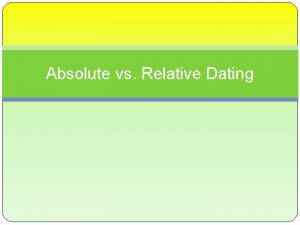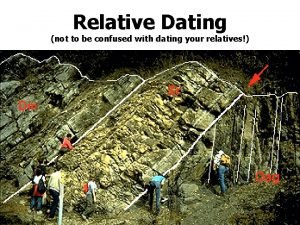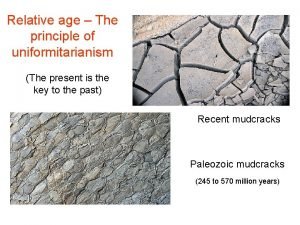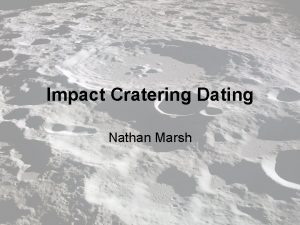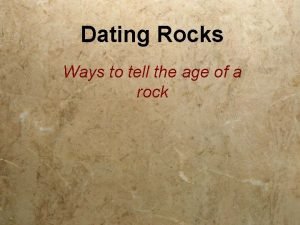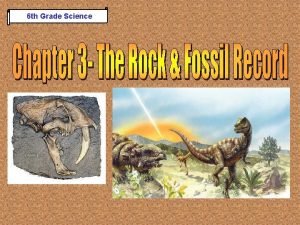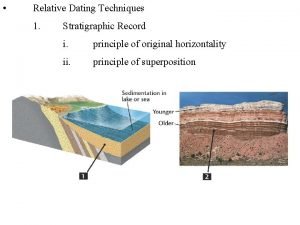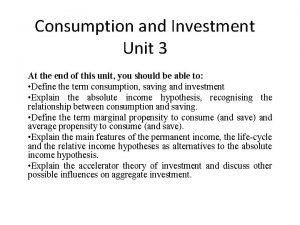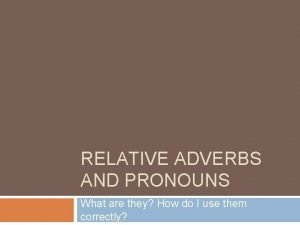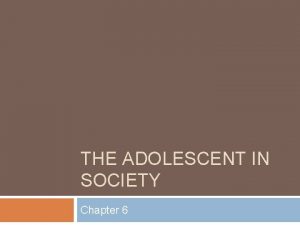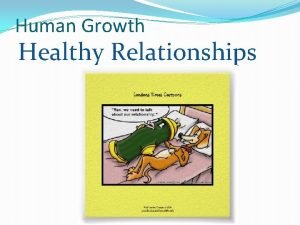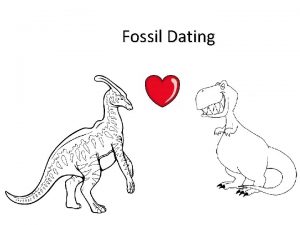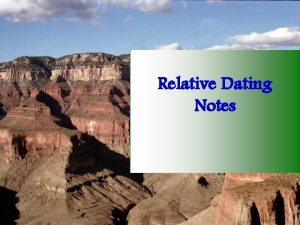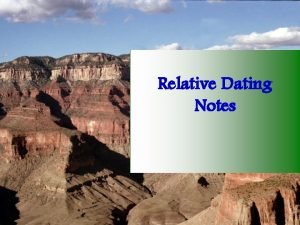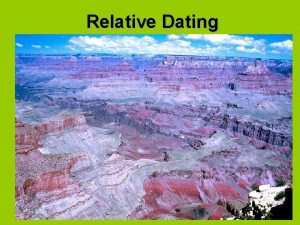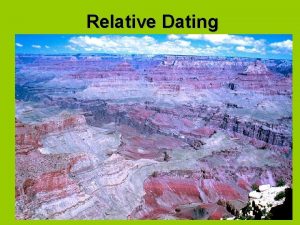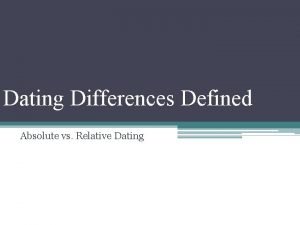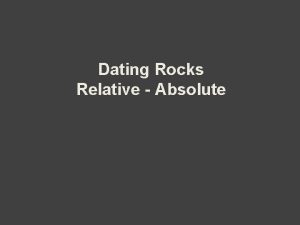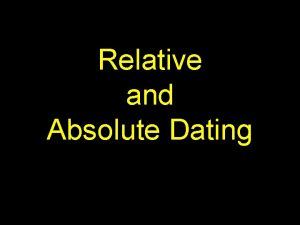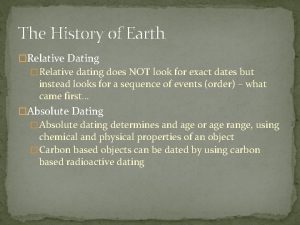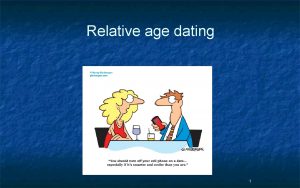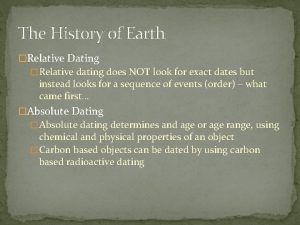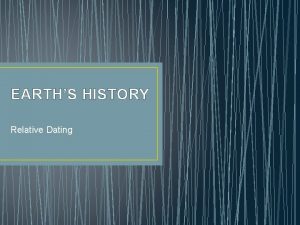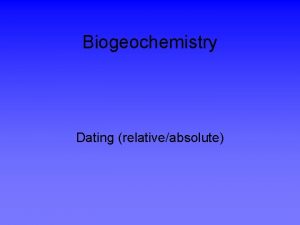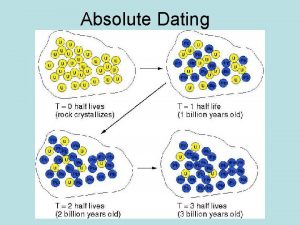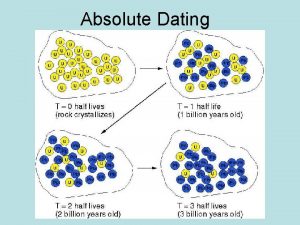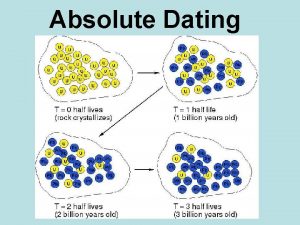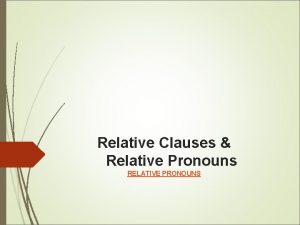Aim How can we explain relative dating Relative



























- Slides: 27

Aim: How can we explain relative dating?

Relative Dating • Determines age of a rock or event by comparing it to other rocks or events

The Principle of Superposition • The youngest rock layer is found on top and the rock ages increase with depth

Youngest Oldest


Exceptions to P. of S. • When rock layers are folded, overturned, or faulted, older layers are moved over younger layers.

Younger Older



Intrusion • Molten rock squeezes into preexisting rocks and solidifies. • YOUNGER than any rock it cuts through.

Extrusion • Molten rock flows on surface and solidifies. • Younger than rock beneath it, older than any layers above it.

Inclusion • A body of older rock within younger rock. • Ex. Pebbles held together by cement – pebbles are older than the cement

Contact Metamorphism • Both intrusions and extrusions form contact metamorphism with layers they touch. • If you see contact metamorphism, it is YOUNGER than that layer.


Folds, faults, and joints • These rock features are YOUNGER than the layers faulted or folded


Using Relative Dating

Correlation • Used to reconstruct geologic history of a location • Determines if rock layers or events in 2 separate areas are the same

1. Similarity of Rocks • Rocks matched on similarity in appearance, color, and composition. • Ex. Two sides of a valley


2. Fossil Evidence • Index fossils useful in determining if two rocks are from same time period • They must have (1)Lived over a wide geographic area (2)Lived for a relatively short time


3. Volcanic Time Markers • Volcanic eruptions are short and eject layer of ash over a large area • Useful as time markers

Unconformities • Eroded surface that has been buried – part of rock record is missing • Rocks above unconformity are younger, rocks below are older • Associated with orogenies

• Commonly caused by: Uplift erosion submergence deposition


 Dating serves several important functions that include:
Dating serves several important functions that include: Absolute vs. relative dating
Absolute vs. relative dating Relative dating
Relative dating Conformity
Conformity Relative dating
Relative dating Relative age dating
Relative age dating Relative dating
Relative dating Dating
Dating Relative dating
Relative dating Relative dating
Relative dating Relative dating
Relative dating Relative dating examples
Relative dating examples Explain relative income hypothesis
Explain relative income hypothesis Stage 15 relative clauses and relative pronouns
Stage 15 relative clauses and relative pronouns Joint relative frequency
Joint relative frequency Types of relative clauses
Types of relative clauses Relative adverb examples
Relative adverb examples Cssc speed dating
Cssc speed dating Undefined status sociology definition
Undefined status sociology definition Dating patterns
Dating patterns Chapter 6 the adolescent in society
Chapter 6 the adolescent in society What is the difference between courting and dating
What is the difference between courting and dating 2 week dating challenge
2 week dating challenge Ordinary dating method
Ordinary dating method Msn dating
Msn dating Stages of dating
Stages of dating Youngest
Youngest Open dating
Open dating

